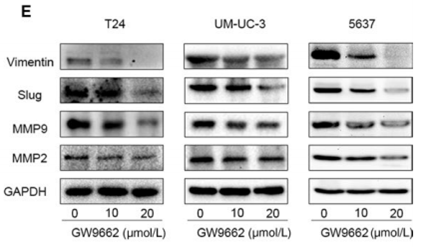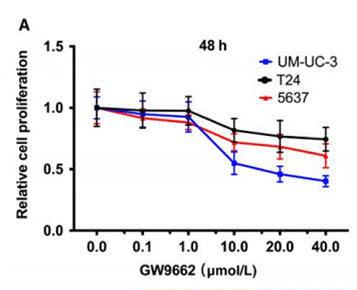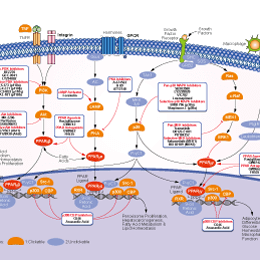
- Bioactive Compounds
- By Signaling Pathways
- PI3K/Akt/mTOR
- Epigenetics
- Methylation
- Immunology & Inflammation
- Protein Tyrosine Kinase
- Angiogenesis
- Apoptosis
- Autophagy
- ER stress & UPR
- JAK/STAT
- MAPK
- Cytoskeletal Signaling
- Cell Cycle
- TGF-beta/Smad
- DNA Damage/DNA Repair
- Compound Libraries
- Popular Compound Libraries
- Customize Library
- Clinical and FDA-approved Related
- Bioactive Compound Libraries
- Inhibitor Related
- Natural Product Related
- Metabolism Related
- Cell Death Related
- By Signaling Pathway
- By Disease
- Anti-infection and Antiviral Related
- Neuronal and Immunology Related
- Fragment and Covalent Related
- FDA-approved Drug Library
- FDA-approved & Passed Phase I Drug Library
- Preclinical/Clinical Compound Library
- Bioactive Compound Library-I
- Bioactive Compound Library-Ⅱ
- Kinase Inhibitor Library
- Express-Pick Library
- Natural Product Library
- Human Endogenous Metabolite Compound Library
- Alkaloid Compound LibraryNew
- Angiogenesis Related compound Library
- Anti-Aging Compound Library
- Anti-alzheimer Disease Compound Library
- Antibiotics compound Library
- Anti-cancer Compound Library
- Anti-cancer Compound Library-Ⅱ
- Anti-cancer Metabolism Compound Library
- Anti-Cardiovascular Disease Compound Library
- Anti-diabetic Compound Library
- Anti-infection Compound Library
- Antioxidant Compound Library
- Anti-parasitic Compound Library
- Antiviral Compound Library
- Apoptosis Compound Library
- Autophagy Compound Library
- Calcium Channel Blocker LibraryNew
- Cambridge Cancer Compound Library
- Carbohydrate Metabolism Compound LibraryNew
- Cell Cycle compound library
- CNS-Penetrant Compound Library
- Covalent Inhibitor Library
- Cytokine Inhibitor LibraryNew
- Cytoskeletal Signaling Pathway Compound Library
- DNA Damage/DNA Repair compound Library
- Drug-like Compound Library
- Endoplasmic Reticulum Stress Compound Library
- Epigenetics Compound Library
- Exosome Secretion Related Compound LibraryNew
- FDA-approved Anticancer Drug LibraryNew
- Ferroptosis Compound Library
- Flavonoid Compound Library
- Fragment Library
- Glutamine Metabolism Compound Library
- Glycolysis Compound Library
- GPCR Compound Library
- Gut Microbial Metabolite Library
- HIF-1 Signaling Pathway Compound Library
- Highly Selective Inhibitor Library
- Histone modification compound library
- HTS Library for Drug Discovery
- Human Hormone Related Compound LibraryNew
- Human Transcription Factor Compound LibraryNew
- Immunology/Inflammation Compound Library
- Inhibitor Library
- Ion Channel Ligand Library
- JAK/STAT compound library
- Lipid Metabolism Compound LibraryNew
- Macrocyclic Compound Library
- MAPK Inhibitor Library
- Medicine Food Homology Compound Library
- Metabolism Compound Library
- Methylation Compound Library
- Mouse Metabolite Compound LibraryNew
- Natural Organic Compound Library
- Neuronal Signaling Compound Library
- NF-κB Signaling Compound Library
- Nucleoside Analogue Library
- Obesity Compound Library
- Oxidative Stress Compound LibraryNew
- Plant Extract Library
- Phenotypic Screening Library
- PI3K/Akt Inhibitor Library
- Protease Inhibitor Library
- Protein-protein Interaction Inhibitor Library
- Pyroptosis Compound Library
- Small Molecule Immuno-Oncology Compound Library
- Mitochondria-Targeted Compound LibraryNew
- Stem Cell Differentiation Compound LibraryNew
- Stem Cell Signaling Compound Library
- Natural Phenol Compound LibraryNew
- Natural Terpenoid Compound LibraryNew
- TGF-beta/Smad compound library
- Traditional Chinese Medicine Library
- Tyrosine Kinase Inhibitor Library
- Ubiquitination Compound Library
-
Cherry Picking
You can personalize your library with chemicals from within Selleck's inventory. Build the right library for your research endeavors by choosing from compounds in all of our available libraries.
Please contact us at info@selleckchem.com to customize your library.
You could select:
- Antibodies
- Bioreagents
- qPCR
- 2x SYBR Green qPCR Master Mix
- 2x SYBR Green qPCR Master Mix(Low ROX)
- 2x SYBR Green qPCR Master Mix(High ROX)
- Protein Assay
- Protein A/G Magnetic Beads for IP
- Anti-Flag magnetic beads
- Anti-Flag Affinity Gel
- Anti-Myc magnetic beads
- Anti-HA magnetic beads
- Poly DYKDDDDK Tag Peptide lyophilized powder
- Protease Inhibitor Cocktail
- Protease Inhibitor Cocktail (EDTA-Free, 100X in DMSO)
- Phosphatase Inhibitor Cocktail (2 Tubes, 100X)
- Cell Biology
- Cell Counting Kit-8 (CCK-8)
- Animal Experiment
- Mouse Direct PCR Kit (For Genotyping)
- New Products
- Contact Us
GW9662
PPAR antagonist
research use only
GW9662 is a selective PPAR antagonist for PPARγ with IC50 of 3.3 nM in a cell-free assay, with at least 10- to 600-fold functional selectivity in cells with PPARγ versus PPARα and PPARδ.

GW9662 Chemical Structure
Molecular Weight: 276.68
Purity & Quality Control
Batch:
Purity:
99.94%
99.94
GW9662 Related Products
| Related Targets | PPARα PPARβ/δ PPARγ PPARδ | Click to Expand |
|---|---|---|
| Related Products | T0070907 GW6471 WY-14643 (Pirinixic Acid) GSK3787 GW0742 AZ6102 Astaxanthin Eupatilin GSK0660 Oroxin A Harmine Palmitoylethanolamide Lanifibranor (IVA-337) DG172 dihydrochloride Glabridin Ciprofibrate Clofibric Acid Alpinetin Elafibranor Daidzein Gypenoside XLIX | Click to Expand |
| Related Compound Libraries | FDA-approved Drug Library Natural Product Library Apoptosis Compound Library DNA Damage/DNA Repair compound Library Cell Cycle compound library | Click to Expand |
Signaling Pathway
Cell Culture and Working Concentration
| Cell Lines | Assay Type | Concentration | Incubation Time | Formulation | Activity Description | PMID |
|---|---|---|---|---|---|---|
| 293H | Function assay | 30 mins | Antagonist activity at human PPARgamma expressed in 293H cells assessed as reduction in transcriptional response preincubated for 30 mins followed by addition and measured after 16 hrs by reporter gene-based FRET assay, EC50=0.002μM | 31294974 | ||
| Click to View More Cell Line Experimental Data | ||||||
Mechanism of Action
| Description | GW9662 is a selective PPAR antagonist for PPARγ with IC50 of 3.3 nM in a cell-free assay, with at least 10- to 600-fold functional selectivity in cells with PPARγ versus PPARα and PPARδ. | ||||
|---|---|---|---|---|---|
| Targets |
|
In vitro |
||||
| In vitro | GW9662 binds to Cys(285) on PPARgamma which is conserved among all three PPARs. GW9662 acts as an antagonist of PPARgamma which is confirmed in an assay of adipocyte differentiation inhibition. [1] GW9662 prevents activation of PPARγ and inhibits growth of human mammary tumour cell lines (MCF7, MDA-MB-468, MDA-MB-231) with IC50 of 20 μM-30 μM, suggesting either the existence of PPARγ agonistic properties of GW9662 or growth-inhibitory mechanisms independent of PPARγ. Co-treatment with GW9662 (10 μM) results in statistically lower viable cell numbers after 7 days in MDA-MB-231 cells. [2] PPARγ1 ligands could suppress RANKL-induced osteoclast formation in primary murine myeloid (BMs) and RAW264.7 cells. Importantly, suppression by these ligands is reversed in a concentration-dependent fashion with GW 9662 (2 μM). GW 9662 (2 μM) blocks IL-4 suppression of osteoclast formation in BMs. GW 9662 (1 μM) blocks RANKL activation of NF-κB in RAW264.7 cells. [3] GW9662 (10 μM) inhibits hormone- and agonist-induced adipogenesis of primary preadipocytes from patients with thyroid eye disease. [4] |
|||
|---|---|---|---|---|
| Kinase Assay | Binding assay | |||
| The human PPARα, PPARγ, and PPARδ ligand binding domains (LBDs) are expressed in E. coli as polyhistidine-tagged fusion proteins. Receptors are immobilized on SPA beads by addition of the desired receptor (15 nM) to a slurry of streptavidin-modifed SPA beads (0.5 mg/mL) in assay buffer. The mixture is allowed to equilibrate for at least 1 hour at room temperature, and the beads are pelleted by centrifugation at 1×103 g. The supernate is discarded, and the beads are resuspended in the original volume of fresh assay buffer with gentle mixing. The centrifugation/resuspension procedure is repeated, and the resulting slurry of receptor-coated beads is used immediately or stored at 4 ℃ for up to 1 week before use. [3H]GW2443 are used as radioligands for determination of competition binding to PPARα, PPARγ, and PPARδ, respectively. Unless otherwise indicated, the buffer used for all assays is 50 mM HEPES (pH 7), 50 mM NaCl, 5 mM CHAPS, 0.1 mg/mL BSA, and 10 mM DTT. For some experiments, the HEPES (pH 7) is replaced with 50 mM Tris (pH 8). | ||||
| Cell Research | Cell lines | MDA-MB-231 cells | ||
| Concentrations | 10 μM | |||
| Incubation Time | 10 days | |||
| Method | MDA-MB-231 cells are seeded at a density of 1 × 105 cells per 25 cm3 tissue culture flask. After 24 h (day 0), the growth medium is replaced with fresh medium containing GW9662 (10 μM) or both together. Control flasks receives 0.1% DMSO. Cells are harvested on days 0, 3, 5, 7, 10 for each treatment condition by trypsinisation, stained using trypan blue, and the total and viable number of cells per flask calculates using a haemocytometer. |
|||
| Experimental Result Images | Methods | Biomarkers | Images | PMID |
| Western blot | Vimentin / Slug / MMP9 / MMP2 |

|
30912275 | |
| Growth inhibition assay | Cell proliferation |

|
30912275 | |
In Vivo |
||
| In vivo | Pretreatment with LPS (1 mg/kg i.p.) significantly attenuates all markers of renal injury and dysfunction caused by ischemia/reperfusion (I/R) injury in rats. Most notably, GW9662 (1 mg/kg i.p.) abolishes the protective effects of LPS. [5] |
|
|---|---|---|
| Animal Research | Animal Models | male Wistar rats |
| Dosages | 1 mg/kg | |
| Administration | intraperitoneal injection | |
References |
|
Chemical Information
| Molecular Weight | 276.68 | Formula | C13H9ClN2O3 |
| CAS No. | 22978-25-2 | SDF | Download GW9662 SDF |
| Synonyms | N/A | ||
| Smiles | C1=CC=C(C=C1)NC(=O)C2=C(C=CC(=C2)[N+](=O)[O-])Cl | ||
Storage and Stability
| Storage (From the date of receipt) | |||
|
In vitro |
DMSO : 55 mg/mL ( (198.78 mM) Moisture-absorbing DMSO reduces solubility. Please use fresh DMSO.) Water : Insoluble Ethanol : Insoluble |
Molecular Weight Calculator |
|
In vivo Add solvents to the product individually and in order. |
In vivo Formulation Calculator |
|||||
Preparing Stock Solutions
Molarity Calculator
In vivo Formulation Calculator (Clear solution)
Step 1: Enter information below (Recommended: An additional animal making an allowance for loss during the experiment)
mg/kg
g
μL
Step 2: Enter the in vivo formulation (This is only the calculator, not formulation. Please contact us first if there is no in vivo formulation at the solubility Section.)
% DMSO
%
% Tween 80
% ddH2O
%DMSO
%
Calculation results:
Working concentration: mg/ml;
Method for preparing DMSO master liquid: mg drug pre-dissolved in μL DMSO ( Master liquid concentration mg/mL, Please contact us first if the concentration exceeds the DMSO solubility of the batch of drug. )
Method for preparing in vivo formulation: Take μL DMSO master liquid, next addμL PEG300, mix and clarify, next addμL Tween 80, mix and clarify, next add μL ddH2O, mix and clarify.
Method for preparing in vivo formulation: Take μL DMSO master liquid, next add μL Corn oil, mix and clarify.
Note: 1. Please make sure the liquid is clear before adding the next solvent.
2. Be sure to add the solvent(s) in order. You must ensure that the solution obtained, in the previous addition, is a clear solution before proceeding to add the next solvent. Physical methods such
as vortex, ultrasound or hot water bath can be used to aid dissolving.
Tech Support
Answers to questions you may have can be found in the inhibitor handling instructions. Topics include how to prepare stock solutions, how to store inhibitors, and issues that need special attention for cell-based assays and animal experiments.
Tel: +1-832-582-8158 Ext:3
If you have any other enquiries, please leave a message.
* Indicates a Required Field






































